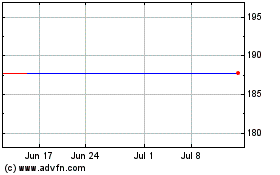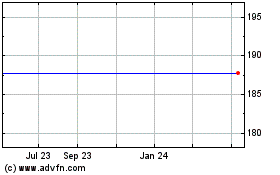KeyBank enhances developer agility and
deployment speed with Linux containers and Kubernetes
orchestration, powered by Red Hat’s more secure, flexible and open
enterprise container platform
Red Hat, Inc. (NYSE: RHT), the world's leading provider of open
source solutions, today announced that KeyBank, one of the United
States’ largest bank-based financial services companies, used the
Red Hat OpenShift Container Platform to expand the bank’s digital
banking capabilities.
As with many large companies, KeyBank found that application
delivery resulted in complexity growth over time, with slow manual
testing, quarterly release cycles and outages resulting in poor
Mean-to-time-Resolution (MTTR).
Among other changes, KeyBank created a DevOps practice that
could create a culture of innovation and quickly look at the
marketplace for tools that could help increase agility and customer
experience. KeyBank's DevOps team wanted to embrace an approach
that also provided greater security for customer information. Like
all large financial services organizations, the bank adheres to
complex regulatory requirements that can make it challenging to
move even simple changes into production.
To help meet these goals, KeyBank’s DevOps team began
considering a container-based application platform, seeking to
decrease complexity by isolating applications from the underlying
infrastructure and helping development teams get to work with
minimal configuration and management time.
The Linux container space, however, was quickly evolving, so
KeyBank wanted a trusted partner to not only help them tap into the
open source community around containers but also to help them move
containers into production in a more secure and stable manner. Red
Hat, a top contributor to both the Docker and Kubernetes open
source projects, and its award-winning Red Hat OpenShift Container
Platform fit KeyBank’s criteria.
Red Hat OpenShift Container Platform is the first and only
container-centric, hybrid cloud solution built from the Docker,
Kubernetes, Project Atomic and OpenShift Origin upstream projects
and based on the trusted backbone of the world’s leading enterprise
Linux platform, Red Hat Enterprise Linux. Red Hat OpenShift
Container Platform provides a more secure, stable platform for
container-based deployments without sacrificing current IT
investments, allowing for mission-critical, traditional
applications to coexist alongside new, cloud-native and
container-based applications.
As KeyBank already had an existing Red Hat Enterprise Linux
environment, deploying Red Hat OpenShift Container Platform allowed
them to retain consistency across their infrastructure footprints.
When challenges did arise, KeyBank’s IT team knew that they could
call on Red Hat’s award-winning Global Support Services
organization to share best practices and provide the world-class
support that they needed to continue running at scale.
In seven months, KeyBank completed product evaluation,
selection, and migration of multiple applications to Red Hat
OpenShift Container Platform, and built its container-centric
environments for development, testing, staging and production.
KeyBank also created a continuous delivery pipeline to automate the
majority of application development tasks through Red Hat OpenShift
Container Platform, enabling developers to focus on moving quickly
to market, reliability, and quality.
Within its continuous delivery culture and in response to
customer input, KeyBank can now look forward to application release
cycles with little to no downtime. Additionally, Red Hat OpenShift
Container Platform is now integrated with KeyBank’s automated
testing, with analysis showing that 60 percent of defects are now
resolved within a day.
KeyBank now plans to spread its DevOps teams into other projects
in order to help scale the practice across the organization.
Supporting Quotes
Ashesh Badani, vice president and general manager, OpenShift,
Red Hat“Red Hat OpenShift Container Platform helps bring the best
of containers to the forefront, and KeyBank is a great example of
an organization using containers to modernize its IT organization
while introducing new digital services and applications to its
customers. As its technology partner in this modernization, Red Hat
is ready to continue to help KeyBank as they employ containers to
enable digital transformation.”
John Rzeszotarski, director of DevOps, KeyBank“When we completed
our initial technology review, we found that there was really only
one software vendor investing in the capabilities of Docker and
Kubernetes while providing the support and enterprise-grade
hardening that we required in a production container platform. That
company was Red Hat and the product was OpenShift. OpenShift meets
these goals with the utilization of Docker that simplifies
Infrastructure engineering, delivery, and support; moreover,
Kubernetes provides the robust reliability and service levels a
flagship application requires for a large enterprise.”
Additional Resources
- Learn more about Red Hat OpenShift
Container Platform
- See who else is using Red Hat OpenShift
Container Platform
- Read more Red Hat success stories
Connect with Red Hat
- Learn more about Red Hat
- Get more news in the Red Hat
newsroom
- Read the Red Hat blog
- Follow Red Hat on Twitter
- Join Red Hat on Facebook
- Watch Red Hat videos on YouTube
- Join Red Hat on Google+
- Follow Red Hat on LinkedIn
About Red Hat, Inc.
Red Hat is the world's leading provider of open source software
solutions, using a community-powered approach to provide reliable
and high-performing cloud, Linux, middleware, storage and
virtualization technologies. Red Hat also offers award-winning
support, training, and consulting services. As a connective hub in
a global network of enterprises, partners, and open source
communities, Red Hat helps create relevant, innovative technologies
that liberate resources for growth and prepare customers for the
future of IT. Learn more at http://www.redhat.com.
Forward-Looking Statements
Certain statements contained in this press release may
constitute "forward-looking statements" within the meaning of the
Private Securities Litigation Reform Act of 1995. Forward-looking
statements provide current expectations of future events based on
certain assumptions and include any statement that does not
directly relate to any historical or current fact. Actual results
may differ materially from those indicated by such forward-looking
statements as a result of various important factors, including:
risks related to the ability of the Company to compete effectively;
the ability to deliver and stimulate demand for new products and
technological innovations on a timely basis; delays or reductions
in information technology spending; the integration of acquisitions
and the ability to market successfully acquired technologies and
products; fluctuations in exchange rates; the effects of industry
consolidation; uncertainty and adverse results in litigation and
related settlements; the inability to adequately protect Company
intellectual property and the potential for infringement or breach
of license claims of or relating to third party intellectual
property; risks related to data and information security
vulnerabilities; the ability to meet financial and operational
challenges encountered in our international operations; ineffective
management of, and control over, the Company's growth and
international operations; and changes in and a dependence on key
personnel, as well as other factors contained in our most recent
Quarterly Report on Form 10-Q (copies of which may be accessed
through the Securities and Exchange Commission's website at
http://www.sec.gov), including those found therein under the
captions "Risk Factors" and "Management's Discussion and Analysis
of Financial Condition and Results of Operations". In addition to
these factors, actual future performance, outcomes, and results may
differ materially because of more general factors including
(without limitation) general industry and market conditions and
growth rates, economic and political conditions, governmental and
public policy changes and the impact of natural disasters such as
earthquakes and floods. The forward-looking statements included in
this press release represent the Company's views as of the date of
this press release and these views could change. However, while the
Company may elect to update these forward-looking statements at
some point in the future, the Company specifically disclaims any
obligation to do so. These forward-looking statements should not be
relied upon as representing the Company's views as of any date
subsequent to the date of this press release.
Red Hat, Red Hat Enterprise Linux, the
Shadowman logo and OpenShift are trademarks or registered
trademarks of Red Hat, Inc. or its subsidiaries in the U.S. and
other countries. Linux® is the registered trademark of Linus
Torvalds in the U.S. and other countries.
View source
version on businesswire.com: http://www.businesswire.com/news/home/20161213005757/en/
Red Hat, Inc.John Terrill,
+1-571-421-8132jterrill@redhat.com
Red Hat (NYSE:RHT)
Historical Stock Chart
From Mar 2024 to Apr 2024

Red Hat (NYSE:RHT)
Historical Stock Chart
From Apr 2023 to Apr 2024
